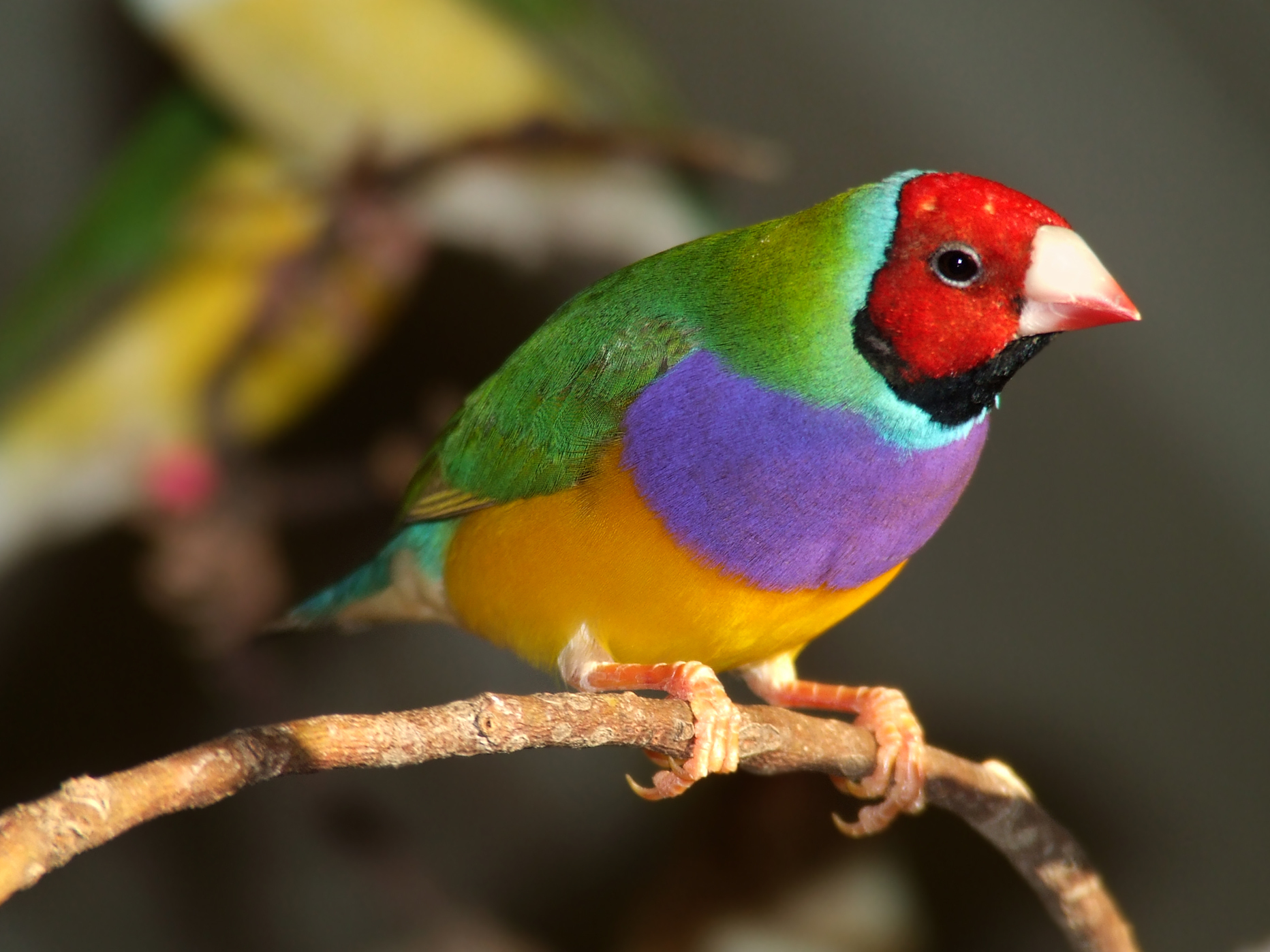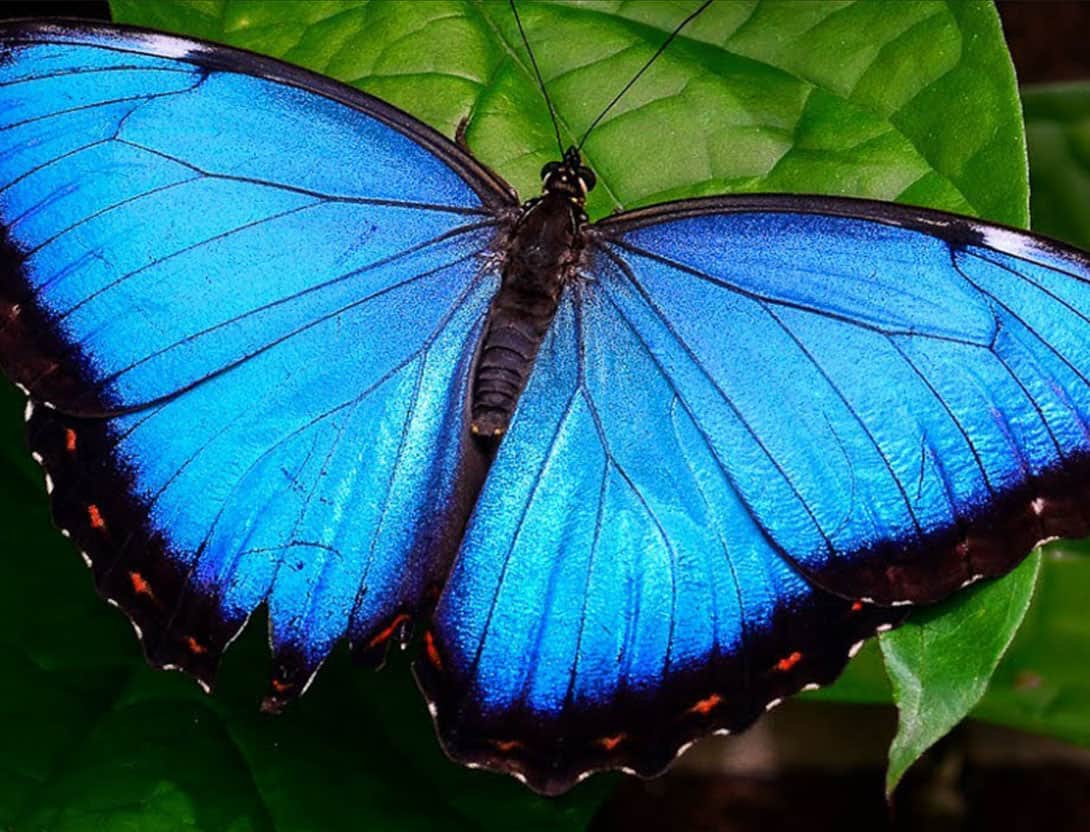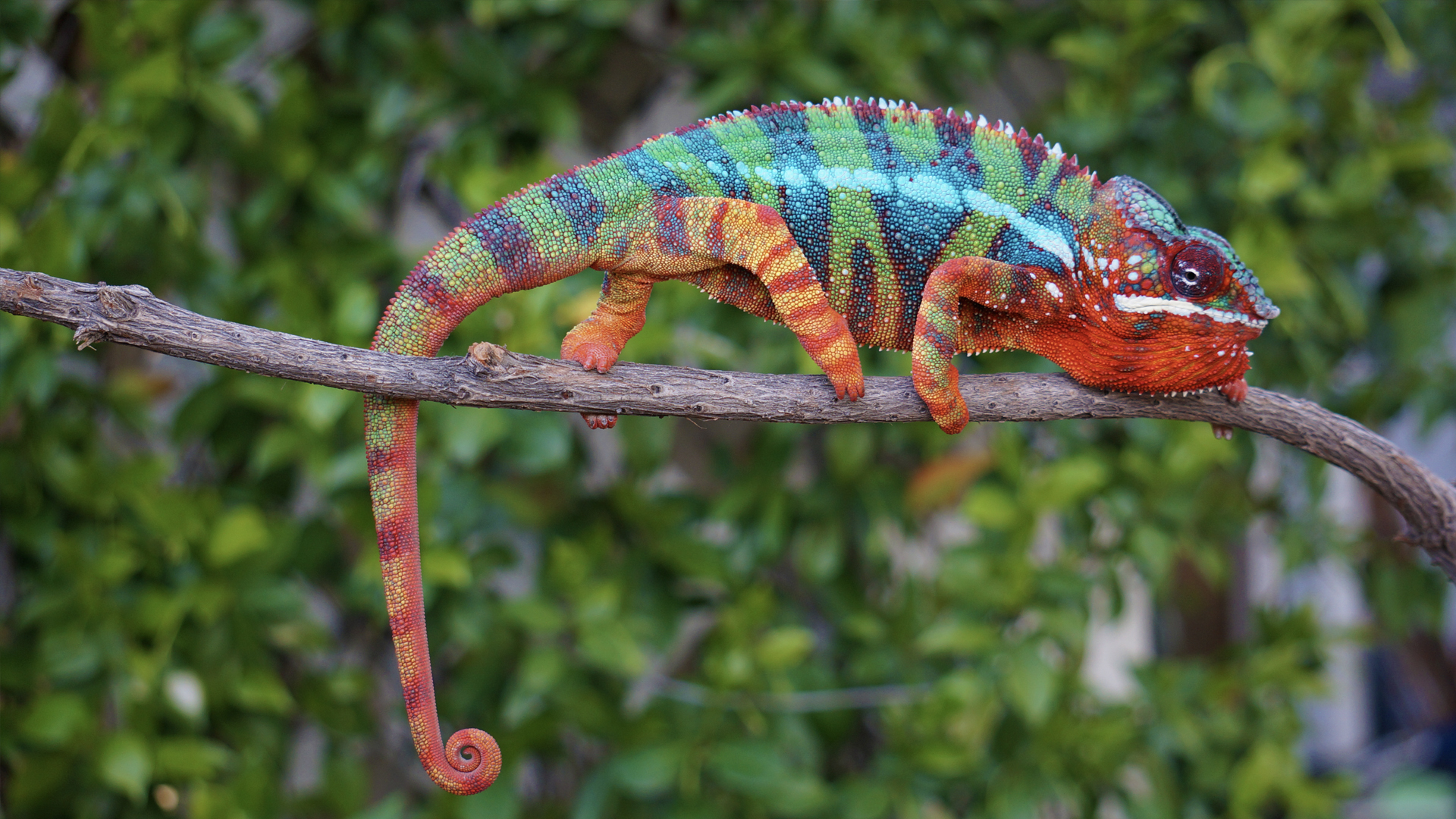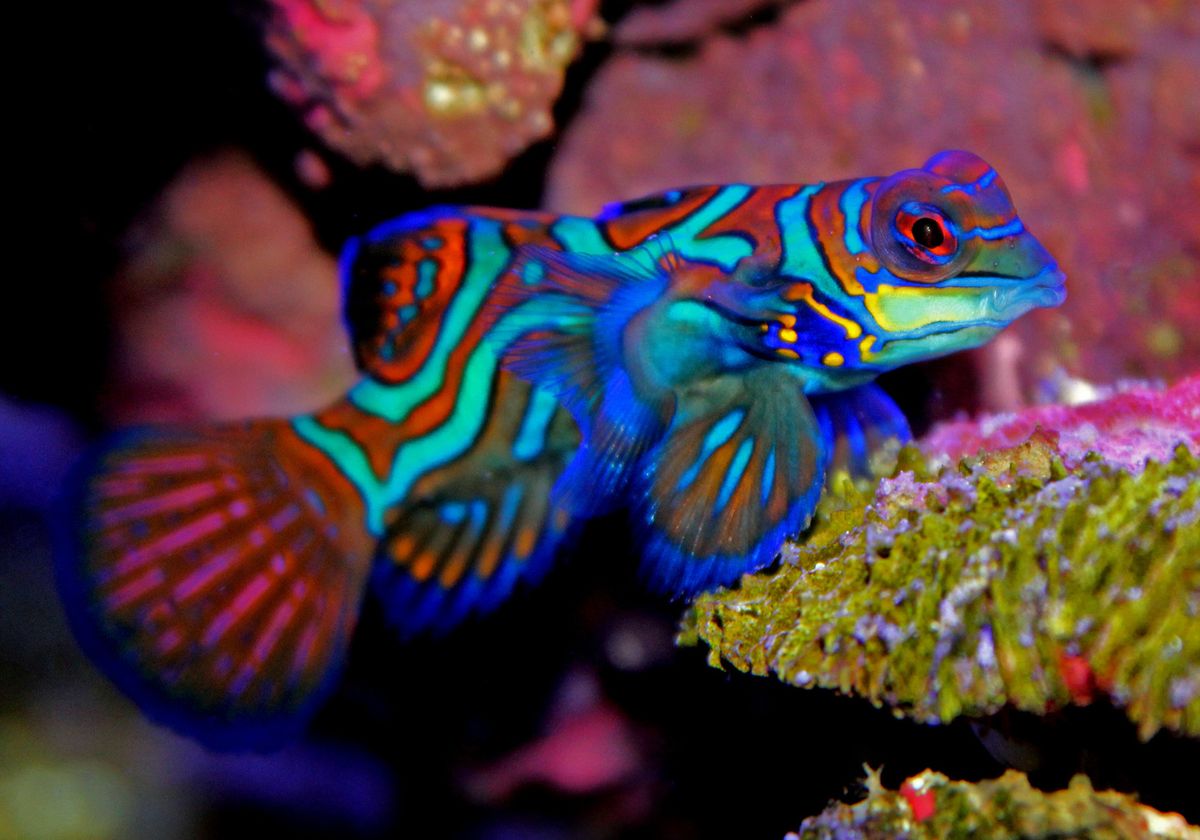The natural world is full of vibrant colors, and many animals are known for their stunningly bright hues. From tropical birds with brightly colored feathers to fish with bold stripes, the animal kingdom is full of creatures that are sure to catch your eye. The colors of these animals serve a variety of purposes, from attracting mates to warning predators.
In this article, we will explore the top 10 most colorful animals in the world, according to various sources. Whether you’re a nature lover or simply appreciate the beauty of the world around us, you’re sure to be amazed by these stunning creatures.
You are reading: Top 10 Most Colorful Animals In The World

Top 10 Most Colorful Animals In The World
Scarlet Macaw
The Scarlet Macaw (Ara macao) is a large, brightly colored parrot native to the humid evergreen forests of the Americas. Its feathers range in color from scarlet on the head and shoulders to yellow on the back and mid-wing feathers, with blue on the wing tips and tail feathers. The face has short white feathers that surround the light yellow-colored eyes, and the long, thick beak is light on the top and dark black on the bottom.
Scarlet macaws are intelligent birds with an abundance of energy and character, and they make great companions with a sweet disposition. They are also known for their loud, raucous calls and can be quite noisy.
Scarlet macaws are important seed predators of large tree fruits in the ecosystems in which they live and may influence the generation of forest tree species. They are also valuable and beautiful members of tropical forests, where their presence has significant ecotourism benefits.
Blue Morpho Butterfly

The Blue Morpho Butterfly (Morpho peleides) is a large butterfly found throughout Central and South America. It is one of the largest butterflies in the world, with a wingspan reaching up to 8 inches.
The topside of its wings is a bright, iridescent blue color, which is actually not due to a pigment, but the configuration of scales reflecting light in a way that produces an apparent iridescent blue color. The underside of its wings, on the other hand, is a dull brown color with many eyespots, providing camouflage against predators such as birds and insects when its wings are closed.
When the Blue Morpho flies, the contrasting bright blue and dull brown colors flash, making it look like the butterfly is appearing and disappearing. The males’ wings are broader than those of the females and appear to be brighter in color.
Blue Morpho Butterflies are known for their spectacular blue color and are the most common butterfly of the Morpho genus in Central America. They inhabit tropical rainforests, spending most of their time in the understory, but while looking for mates, they fly throughout all parts of the canopy and are even seen by pilots flying overhead.
Panther Chameleon

The Panther Chameleon (Furcifer pardalis) is a species of chameleon found in the eastern and northern parts of Madagascar in a tropical forest biome. Here are some key facts about this colorful reptile:
Description:
– The Panther Chameleon is known for its ability to change color to blend in with its surroundings and reflect its mood.
– It has a distinctive pattern of bright greens, blues, and reds, with males being more colorful than females.
– The chameleon’s feet are forked, which is where its generic name (Furcifer) comes from.
Habitat:
– Panther Chameleons are native to Madagascar, but have been introduced to other areas such as Réunion, Mauritius, and Florida.
– They live in tropical forests and spend most of their time in trees.
Behavior:
– Panther Chameleons are territorial and spend most of their time alone, except for mating.
– They are slow-moving, except for their tongues, which can shoot out to catch prey.
– Panther Chameleons are docile and quiet reptiles.
Care:
– Panther Chameleons require specific care and are not recommended for beginner reptile owners.
– They need a large, well-ventilated enclosure with plenty of branches and foliage to climb on.
– The enclosure should be kept at a temperature of 75-85°F during the day and 65-75°F at night.
– Panther Chameleons require a varied diet of insects and should be fed daily.
Overall, the Panther Chameleon is a fascinating and beautiful reptile that requires specific care and attention. If you are considering getting one as a pet, it is important to do your research and ensure that you can provide the proper care for this unique animal.
Mandarin Fish

The Mandarin Fish (Synchiropus splendidus), also known as the Mandarin Dragonet, is a small, brightly colored fish that is popular in the saltwater aquarium trade.
Here are some interesting facts about this colorful fish:
Description:
– The Mandarin Fish is a member of the dragonet family and is native to the Pacific, ranging from the Ryukyu Islands south to Australia.
– It is a small fish, typically reaching about 3 inches (8 cm) in length.
– The fish is known for its bright orange, blue, and green stripes, which make it a popular addition to aquariums.
Habitat:
– Mandarin Fish are tropical, marine fish found in waters with a temperature range of 24 to 26ºC.
– They are bottom-dwelling fish and can be found at depths of up to 18 meters.
Behavior:
– Mandarin Fish are peaceful and do well in community aquariums.
– They are carnivorous and feed on small crustaceans and other invertebrates.
– The fish is known for its unique mating behavior, in which the male performs a courtship dance to attract a female.
Care:
– Mandarin Fish require specific care and are not recommended for beginner aquarium owners.
– They need a well-established aquarium with plenty of live rock and hiding places.
– The aquarium should be kept at a temperature of 75-82°F and a pH of 8.1-8.4.
– Mandarin Fish require a varied diet of small crustaceans and other invertebrates and should be fed multiple times a day.
Overall, the Mandarin Fish is a beautiful and unique addition to any saltwater aquarium. However, they require specific care and attention, so it is important to do your research before adding one to your aquarium.
Toucan
Toucans are Neotropical birds that belong to the near passerine bird family Ramphastidae. They are known for their large and often colorful bills, which can be up to four times the size of their head.
Toucans range in size from the lettered aracari, which is 130 g (4.6 oz) and 29 cm (11 in), to the toco toucan, which is 680 g (1.50 lb) and 63 cm (25 in). Their bodies are short and compact, with a rounded tail that varies in length.
Toucans are native to the Neotropics, from Southern Mexico through Central America, into South America south to northern Argentina. They mostly live in the lowland tropics, but the mountain species from the genus Andigena reach temperate climates at high altitudes in the Andes and can be found up in taller trees.
Toucans are primarily frugivores, meaning they feed mostly on raw fruits or succulent fruit-like produce of plants such as roots, shoots, nuts. They are also known for their loud calls, which include barks, bugling calls, and harsh croaks. Toucans are popular in the pet trade and are also used in advertising due to their playful and intelligent nature.
Love Birds
Lovebirds are small, colorful parrots that belong to the genus Agapornis in the Old World parrot family Psittaculidae. They are native to the African continent, with the grey-headed lovebird being native to Madagascar. Here are some interesting facts about lovebirds:
Description:
– Lovebirds are small birds, ranging in size from just over 5 inches to just over 6½ inches.
– They are known for their colorful plumage, which comes in a variety of colors, including green, blue, yellow, and orange.
– Lovebirds have a large, strong beak that they use to crack open seeds and nuts.
Habitat:
– Lovebirds are native to the African continent and are found in a variety of habitats, including savannas, forests, and scrublands.
– They are social birds and are often found in flocks.
Behavior:
– Lovebirds are known for their strong pair bonds and can form long-term relationships with both humans and other lovebirds.
– They are intelligent and affectionate birds, but can become aggressive if not handled properly.
– Lovebirds are active birds and require plenty of toys and stimulation to keep them entertained.
Care:
– Lovebirds require specific care and are not recommended for beginner bird owners.
– They need a large cage with plenty of toys and perches to keep them entertained.
– Lovebirds require a varied diet of seeds, fruits, and vegetables, and should be fed daily.
– They are social birds and should be kept in pairs or small groups.
Overall, lovebirds are beautiful and intelligent birds that require specific care and attention. If you are considering getting a lovebird as a pet, it is important to do your research and ensure that you can provide the proper care for these unique birds.
Clownfish
Clownfish, also known as anemonefish, are a type of fish that belong to the subfamily Amphiprioninae in the family Pomacentridae. They are found in the wild in the tropical Pacific and Indian oceans, from northwestern Australia and Southeast Asia to Taiwan and Japan’s Ryukyu Islands.
Here are some interesting facts about clownfish:
Appearance:
– Clownfish come in a variety of colors, including orange, yellow, and black, with distinctive white bars or patches.
– They are relatively small fish, typically reaching about 4.3 inches in length.
– Clownfish have a symbiotic relationship with sea anemones, which provide them with protection and a place to lay their eggs.
Behavior:
– Clownfish are social fish and live in groups of males with one dominant female and a dominant male.
– They communicate with each other through popping and clicking noises.
– Clownfish are territorial and will aggressively defend their host anemone and the area around it.
Care:
– Clownfish are popular in the aquarium trade and are relatively easy to care for.
– They require a tank with plenty of hiding places and live rock, as well as a host anemone if possible.
– Clownfish are omnivores and should be fed a varied diet of flakes, pellets, and frozen foods.
Overall, clownfish are fascinating and colorful fish that are popular in the aquarium trade. They have a unique symbiotic relationship with sea anemones and are relatively easy to care for, making them a great choice for beginner aquarium owners.
Pheasant
Pheasants are birds of several genera within the family Phasianidae in the order Galliformes. Although they can be found all over the world in introduced populations, the pheasant genera native range is restricted to Eurasia. Here are some interesting facts about pheasants:
Description:
– Pheasants are characterised by strong sexual dimorphism, males being highly decorated with bright colors and adornments such as wattles.
– Males are usually larger than females and have longer tails.
– Pheasants are larger and longer-tailed than an American Crow, but smaller than a Wild Turkey.
Habitat:
– Pheasants are found in a variety of habitats, including savannas, forests, and scrublands.
– They are gregarious birds and outside the breeding season form loose flocks.
Behavior:
– Pheasants are prey species and must face major sources of mortality beginning the day they are laid in the nest.
– They are able to fly fast for short distances, but prefer to run.
– Pheasants are traditionally a target of small game poachers in the UK.
Care:
– Pheasants are popular game birds for sport hunters and are well adapted to the British climate.
– They are also popular in the pet trade, but require specific care and are not recommended for beginner bird owners.
– Pheasants require a varied diet of insects, seeds, and leaves.
– They spend almost their entire life on the ground, rarely ever being seen in trees.
Read more : 10 Types Of Turtles In Florida
Overall, pheasants are fascinating birds that are known for their bright colors and unique adornments. They are popular in the game bird industry and are also kept as pets, but require specific care and attention. If you are considering getting a pheasant as a pet, it is important to do your research and ensure that you can provide the proper care for these unique birds.
Mandarin duck
The Mandarin duck (Aix galericulata) is a medium-sized perching duck species native to the East Palearctic. Here are some interesting facts about Mandarin ducks:
– Sexual dimorphism: Mandarin ducks are sexually dimorphic, with males showing a dramatic difference from females. Males have a greenish-black forehead, a purple crest near the back of the head, and big orangey “sail fins” on their back. Females, on the other hand, have a shaggy gray head with narrow white spectacles and bold pale dappled spots along their flanks.
– Nesting behavior: Unlike most ducks, Mandarin ducks nest in trees, sometimes high above the water. This unique nesting behavior sets them apart from other waterfowl species.
– Symbol of conjugal affection and fidelity: In traditional Chinese culture, Mandarin ducks are believed to be lifelong couples, unlike other species of ducks. They are regarded as a symbol of conjugal affection and fidelity and are frequently featured in Chinese art.
– Introduced, non-native species: Mandarin ducks have been introduced from the Far East to various parts of the world, including the United States and the United Kingdom. They are often found in lakes and parks, usually with nearby trees.
– Highly social: Mandarin ducks are highly social birds, flying in large flocks during the winter. Their pair bonds are very strong, and they will return to the same mate if they survive. Females take the initiative in choosing a mate by orienting enticing behavior toward a preferred mate.
– Not hunted for food: Mandarin ducks are not hunted for food because they taste bad, which has helped them survive as a species.
Mandrill
The Mandrill (Mandrillus sphinx) is a colorful and primarily ground-dwelling monkey that inhabits the rainforests of equatorial Africa. Here are some interesting facts about this unique primate:
Appearance:
– Mandrills are the largest of all monkeys, with males weighing up to 120 pounds and females weighing up to 30 pounds.
– They are known for their bright colors, including blue and red skin on their faces and brightly hued rumps.
– Adult males have bare colored patches of skin on both the face and the buttocks.
Habitat:
– Mandrills live in the rainforests of equatorial Africa, from the Sanaga River in Cameroon southward to the Congo River.
– They are primarily ground-dwelling, but can climb trees when necessary.
Behavior:
– Mandrills are social animals and live in troops consisting of a male and several females along with their young.
– They communicate with each other through a variety of vocalizations, facial expressions, and body language.
– Mandrills are primarily herbivores, feeding on fruit, roots, and other plant material, but also eat insects and small reptiles and amphibians.
Conservation:
– Mandrills are classified as vulnerable on the IUCN Red List due to habitat destruction and hunting for bushmeat.
– Their habitat has declined in Cameroon and Equatorial Guinea, while their range in the Republic of the Congo is limited.
– Gabon is considered the stronghold for the species.
Overall, the Mandrill is a fascinating and unique primate that is known for its bright colors and social behavior. However, they are also vulnerable to habitat destruction and hunting, making conservation efforts important to ensure their survival.
FAQS
1. What makes these animals so colorful?
The vibrant colors of these animals serve a variety of purposes, from attracting mates to warning predators. Coloration and patterns can be used for camouflage, reproductive, warning, or other purposes.
2. Where can I find these animals?
The animals on this list can be found all over the world, depending on the species. Some are native to specific regions, while others have been introduced to other areas.
3. Can I keep these animals as pets?
Some of the animals on this list, such as lovebirds and Mandarin fish, are popular in the pet trade. However, they require specific care and attention, and are not recommended for beginner pet owners. It is important to do your research and ensure that you can provide the proper care for these unique animals.
4. Are these animals endangered?
Some of the animals on this list, such as the Scarlet Macaw and the Mandrill, are classified as vulnerable or threatened due to habitat destruction and hunting. Conservation efforts are important to ensure their survival.
5. What is the most colorful animal in the world?
The most colorful animal in the world is subjective and can vary depending on the criteria used. The animals on this list are some of the most commonly mentioned colorful animals.
Source: https://petstutorial.com
Category: Animals










